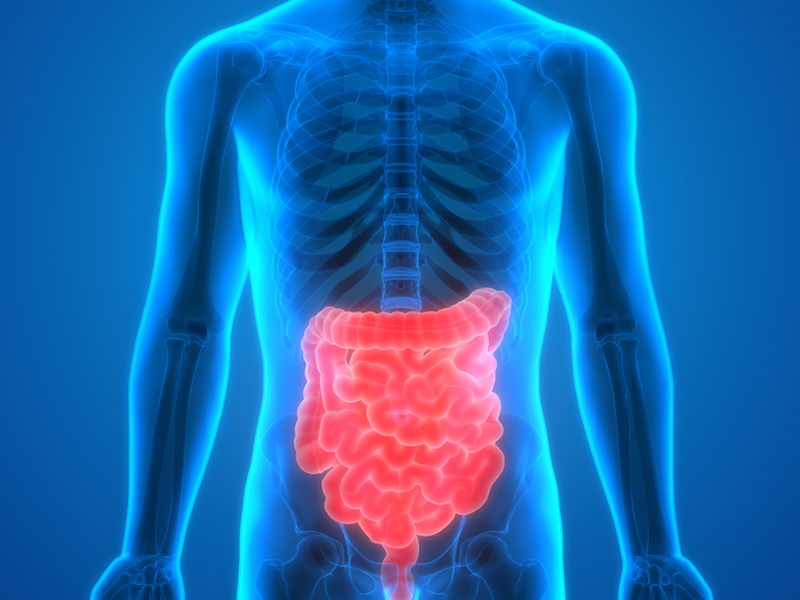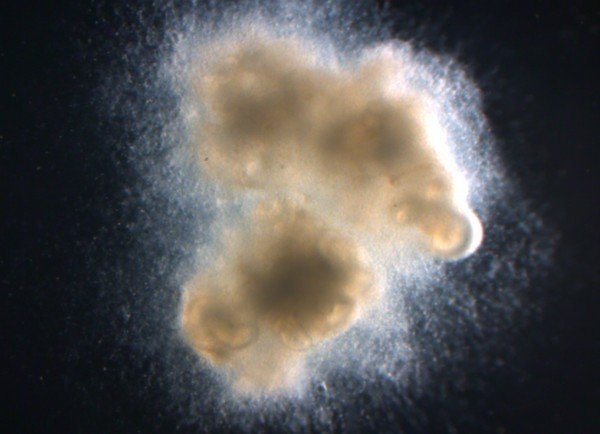
21st November 2016 Gut tissue grown from stem cells Researchers have used human pluripotent stem cells to grow human intestinal tissues with functioning nerves, and then used these to recreate and study a severe intestinal nerve disorder.
Gut tissue is highly complex, so is difficult to create in the lab. It has an inner layer that absorbs nutrients and secretes digestive enzymes, muscles that push food along its length, and nerves that coordinate muscle contractions. However, researchers at Cincinnati Children's Hospital Medical Center have achieved a breakthrough in creating lab-grown gut tissue. They report using human pluripotent stem cells to grow human intestinal tissues with functioning nerves and pulses like the real thing. They later used this tissue to recreate and study a severe intestinal nerve disorder called Hirschsprung's disease. Published in the journal Nature Medicine, their findings describe an unprecedented approach to engineer and study tissues in the intestine – the body's largest immune organ, its food processor and main interface with the outside world. The study authors believe that medical science is now a step closer to using human pluripotent stem cells (which can become any cell type in the body) for regenerative medicine and growing patient-specific human intestines for transplant. "One day, this technology will allow us to grow a section of healthy intestine for transplant into a patient – but the ability to use it now, to test and ask countless new questions, will help human health to the greatest extent," said Michael Helmrath, MD, co-lead study investigator. This ability starts with being able to model and study intestinal disorders in functioning human organ tissue with genetically-specific patient cells. It will also allow researchers to test new therapeutics in functioning lab-grown human intestine before clinical trials in patients.
"Many oral medications give you diarrhoea, cramps and impair intestinal motility. A fairly immediate goal for this technology that would help the largest number of people is as a first-pass screen for new drugs to look for off-target toxicities and prevent side effects in the intestine," explained Jim Wells, PhD, co-lead investigator and director of the Pluripotent Stem Cell Facility at Cincinnati Children's. "We tried a few different approaches largely based on the hypothesis that, if you put the right cells together at the right time in the petri dish, they'll know what to do. It was a longshot, but it worked," said Wells. The appropriate mix caused enteric nerve precursor cells and intestines to grow together in a manner resembling developing fetal intestine. The result was the first evidence for generating complex and functional three-dimensional intestinal organoids in a petri dish, and fully derived from human pluripotent stem cells. "This is one of the most complex tissues to have been engineered," said Wells, who explained that the gastrointestinal tract contains the second largest number of nerves in the human body. He and colleagues used their tissue to study a rare form of Hirschsprung's disease – a condition in which the rectum and colon fail to develop a normal nervous system. A severe form of Hirschsprung's is caused by a fault in the gene PHOX2B. Tests in a petri dish and mice demonstrated that mutating PHOX2B causes profound detrimental changes to innervated intestinal tissues. Helmrath is now making and testing hollow tubes of the lab-grown tissue. These are 2 centimetres long, but if extended to 10 centimetres, they could make good transplants for short bowel syndrome, a condition that can affect premature babies. As science continues to learn more about how important intestinal health is to overall health, using functioning lab-generated human intestine creates an array of new research opportunities, Wells and Helmrath said. This will include the ability to conduct deeper studies into nutritional health, diabetes, severe intestinal diseases like inflammatory bowel disease and Crohn's disease, and other biochemical changes in the body. Their work is described today in the paper, Engineered human pluripotent-stem-cell-derived intestinal tissues with a functional enteric nervous system.
---
Comments »
|








